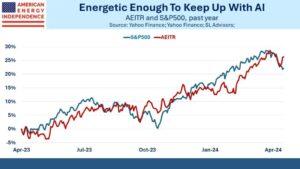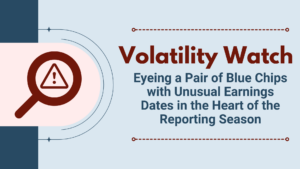The best thing investors can say about 2022 is that it’s almost over. After years of ultra-low interest rates that flattered financial asset prices, rates rose rapidly in response to aggressive global central bank policies to combat soaring inflation, leaving investors few places to hide.
Ultimately, the intrinsic value of any security — stock, bond, real estate — is the present value of future cash flows discounted at the discount rate. Investors’ inability to accurately determine the discount rate created enormous market volatility in 2022.
And because the value of the security decreases as the discount rate increases, 2022’s substantial increase in the discount rate resulted in significant declines across virtually every asset class, from the most conservative to the most speculative. Typical US midterm election anxiety, China’s zero-COVID policy, and the Russia-Ukraine war magnified capital market volatility and investor losses.
As a result, the traditional 60/40 investment portfolio is on pace to record its worst calendar year performance in 85 years, since 1937.1
And yet, despite this gloomy backdrop, investors will start 2023 stuck somewhere between hope and fear.
Hope for a Soft Landing
Excitement over a potential slowdown in both the pace and magnitude of Federal Reserve (Fed) rate hikes — the so-called Fed pivot — has led to several brief but strong bear market rallies over the past six months. And several measures of inflation have begun to show signs of decelerating, fanning the Fed pivot flames. On November 10, the Consumer Price Index (CPI) rose less than expected in October, sending stock prices sharply higher and bond yields lower. Just days later, the Producer Price Index (PPI), a measure of the prices that companies get for finished goods in the marketplace, also increased less than expected.
Despite the most aggressive Fed rate hikes in history, the economy, corporate profits, and labor markets aren’t signaling a recession on the horizon just yet. In the aftermath of the 20th National Congress Communist Party, there is growing speculation that China is desperately seeking a solution to its zero-COVID policy. And, with the onset of winter, there is increasing pressure on Russia and Ukraine to pause military actions and begin to negotiate a settlement.
All this has raised investors’ hopes that the Fed will be able to engineer a soft landing in the first half of 2023.
Fear of the Fed’s Inflation Fight
But investors know that hope is not a strategy. In fact, the Fed has successfully produced a soft landing just three times in the modern era — in the mid-1960s, 1984, and 1994. Against these odds, investors fear that having waited too long to begin its battle with inflation, the Fed will tighten too much to defeat it — and finally break something somewhere in the global capital markets. A deep recession, plummeting corporate profits, and steep job losses almost always follow such a misstep. These fears consume investors as we charge toward 2023.
The Fed’s willingness to risk recession and withstand higher market volatility so that it can firmly defeat inflation suggests that, until it declares victory, risks likely will remain skewed to the downside.
Mind the Gap Between the Economy and Market
Sentiment shifting between hope and fear highlights one of the enduring investment lessons from the pandemic: the economy is not the market. In fact, the gap between the economy and the market has widened dramatically over the past few years.
Oddly, at the height of the COVID-19 health crisis in 2020–2021, markets rallied. Investors recognized that eventually a health solution to the coronavirus would be achieved, the economy would reopen, earnings would rebound, and jobs would return. Afterall, the market is a forward- looking mechanism. Easy monetary policy and massive government spending also aided the pandemic recovery.
Just as strangely, in 2022 — despite a modestly expanding economy, healthy corporate profits, and a strong labor market— financial asset prices collapsed under the weight of tighter monetary policies, fading fiscal spending, surging inflation, China’s zero-COVID policy, and the Russia-Ukraine war.
Now, as 2023 begins, investors expect the economy to falter, corporate profits to plunge, and job losses to rise due to the lag effects of aggressive Fed rate hikes. This potential recession is the most anticipated in modern history. Wildly, when it finally arrives, investors may breathe a welcome sigh of relief and begin looking ahead to the inevitable recovery. Before the economic, earnings, and job market data hit rock bottom, investors will have already begun to price in the next phase of the economic cycle. The question is, will your portfolios be ready?
Click here to read full article
Footnotes
1 Bloomberg Finance, L.P., as of November 17, 2022. Based on the return for the MSCI ACWI IMI Index and the Bloomberg US Aggregate Bond Index of a portfolio weighted 60% to equities and 40% to bonds.
Glossary
Consumer Price Index (CPI)
A widely used measure of inflation at the consumer level that helps evaluate changes in cost of living. The CPI is composed of a basket of consumer goods and services across the economy and is calculated by the US Department of Labor by assessing price changes in the basket of goods and services and averaging them. Core CPI is the same series, but excluding more accurately.
Inflation
An overall increase in the price of an economy’s goods and services during a given period, translating to a loss in purchasing power per unit of currency. Inflation generally occurs when growth of the money supply outpaces growth of the economy. Central banks attempt to limit inflation, and avoid deflation, in order to keep the economy running smoothly.
—
Originally Posted December 5, 2022 – Between Hope and Fear
Disclosure
The views expressed in this material are the views of Michael Arone through the period ended November 17, 2022 and are subject to change based on market and other conditions. This document contains certain statements that may be deemed forward-looking statements. Please note that any such statements are not guarantees of any future performance and actual results or developments may differ materially from those projected.
The information provided does not constitute investment advice and it should not be relied on as such. It should not be considered a solicitation to buy or an offer to sell a security. It does not take into account any investor’s particular investment objectives, strategies, tax status or investment horizon. You should consult your tax and financial advisor. All information is from SSGA unless otherwise noted and has been obtained from sources believed to be reliable, but its accuracy is not guaranteed. There is no representation or warranty as to the current accuracy, reliability or completeness of, nor liability for, decisions based on such information and it should not be relied on as such.
Past performance is not a reliable indicator of future performance.
The trademarks and service marks referenced herein are the property of their respective owners. Third party data providers make no warranties or representations of any kind relating to the accuracy, completeness or timeliness of the data and have no liability for damages of any kind relating to the use of such data.
The whole or any part of this work may not be reproduced, copied or transmitted or any of its contents disclosed to third parties without SSGA’s express written consent.
Investing involves risk including the risk of loss of principal.
Diversification does not ensure a profit or guarantee against loss.
Frequent trading of ETFs could significantly increase commissions and other costs such that they may offset any savings from low fees or costs
Disclosure: State Street Global Advisors
Do not reproduce or reprint without the written permission of SSGA.
All information has been obtained from sources believed to be reliable, but its accuracy is not guaranteed. There is no representation or warranty as to the current accuracy, reliability or completeness of, nor liability for, decisions based on such information and it should not be relied on as such.
State Street Global Advisors and its affiliates (“SSGA”) have not taken into consideration the circumstances of any particular investor in producing this material and are not making an investment recommendation or acting in fiduciary capacity in connection with the provision of the information contained herein.
ETFs trade like stocks, are subject to investment risk, fluctuate in market value and may trade at prices above or below the ETF’s net asset value. Brokerage commissions and ETF expenses will reduce returns.
Bonds generally present less short-term risk and volatility than stocks, but contain interest rate risk (as interest rates raise, bond prices usually fall); issuer default risk; issuer credit risk; liquidity risk; and inflation risk. These effects are usually pronounced for longer-term securities. Any fixed income security sold or redeemed prior to maturity may be subject to a substantial gain or loss.
Investing involves risk including the risk of loss of principal.
The whole or any part of this work may not be reproduced, copied or transmitted or any of its contents disclosed to third parties without SSGA’s express written consent.
Investing in high yield fixed income securities, otherwise known as “junk bonds”, is considered speculative and involves greater risk of loss of principal and interest than investing in investment grade fixed income securities. These Lower-quality debt securities involve greater risk of default or price changes due to potential changes in the credit quality of the issuer.
COPYRIGHT AND OTHER RIGHTS
Other third party content is the intellectual property of the respective third party and all rights are reserved to them. All rights reserved. No organization or individual is permitted to reproduce, distribute or otherwise use the statistics and information in this report without the written agreement of the copyright owners.
Definition:
Arbitrage: the simultaneous buying and selling of securities, currency, or commodities in different markets or in derivative forms in order to take advantage of differing prices for the same asset.
Fund Objectives:
SPY: The investment seeks to provide investment results that, before expenses, correspond generally to the price and yield performance of the S&P 500® Index. The Trust seeks to achieve its investment objective by holding a portfolio of the common stocks that are included in the index (the “Portfolio”), with the weight of each stock in the Portfolio substantially corresponding to the weight of such stock in the index.
VOO: The investment seeks to track the performance of a benchmark index that measures the investment return of large-capitalization stocks. The fund employs an indexing investment approach designed to track the performance of the Standard & Poor’s 500 Index, a widely recognized benchmark of U.S. stock market performance that is dominated by the stocks of large U.S. companies. The advisor attempts to replicate the target index by investing all, or substantially all, of its assets in the stocks that make up the index, holding each stock in approximately the same proportion as its weighting in the index.
IVV: The investment seeks to track the investment results of the S&P 500 (the “underlying index”), which measures the performance of the large-capitalization sector of the U.S. equity market. The fund generally invests at least 90% of its assets in securities of the underlying index and in depositary receipts representing securities of the underlying index. It may invest the remainder of its assets in certain futures, options and swap contracts, cash and cash equivalents, as well as in securities not included in the underlying index, but which the advisor believes will help the fund track the underlying index.
The funds presented herein have different investment objectives, costs and expenses. Each fund is managed by a different investment firm, and the performance of each fund will necessarily depend on the ability of their respective managers to select portfolio investments. These differences, among others, may result in significant disparity in the funds’ portfolio assets and performance. For further information on the funds, please review their respective prospectuses.
Entity Disclosures:
The trademarks and service marks referenced herein are the property of their respective owners. Third party data providers make no warranties or representations of any kind relating to the accuracy, completeness or timeliness of the data and have no liability for damages of any kind relating to the use of such data.
SSGA Funds Management, Inc. serves as the investment advisor to the SPDR ETFs that are registered with the United States Securities and Exchange Commission under the Investment Company Act of 1940. SSGA Funds Management, Inc. is an affiliate of State Street Global Advisors Limited.
Intellectual Property Disclosures:
Standard & Poor’s®, S&P® and SPDR® are registered trademarks of Standard & Poor’s® Financial Services LLC (S&P); Dow Jones is a registered trademark of Dow Jones Trademark Holdings LLC (Dow Jones); and these trademarks have been licensed for use by S&P Dow Jones Indices LLC (SPDJI) and sublicensed for certain purposes by State Street Corporation. State Street Corporation’s financial products are not sponsored, endorsed, sold or promoted by SPDJI, Dow Jones, S&P, their respective affiliates and third party licensors and none of such parties make any representation regarding the advisability of investing in such product(s) nor do they have any liability in relation thereto, including for any errors, omissions, or interruptions of any index.
BLOOMBERG®, a trademark and service mark of Bloomberg Finance, L.P. and its affiliates, and BARCLAYS®, a trademark and service mark of Barclays Bank Plc., have each been licensed for use in connection with the listing and trading of the SPDR Bloomberg Barclays ETFs.
Distributor: State Street Global Advisors Funds Distributors, LLC, member FINRA, SIPC, an indirect wholly owned subsidiary of State Street Corporation. References to State Street may include State Street Corporation and its affiliates. Certain State Street affiliates provide services and receive fees from the SPDR ETFs.
ALPS Distributors, Inc., member FINRA, is distributor for SPDR® S&P 500®, SPDR® S&P MidCap 400® and SPDR® Dow Jones Industrial Average, all unit investment trusts. ALPS Distributors, Inc. is not affiliated with State Street Global Advisors Funds Distributors, LLC.
Before investing, consider the funds’ investment objectives, risks, charges, and expenses. For SPDR funds, you may obtain a prospectus or summary prospectus containing this and other information by calling 1‐866‐787‐2257 or visiting www.spdrs.com. Please read the prospectus carefully before investing.
Disclosure: Interactive Brokers
Information posted on IBKR Campus that is provided by third-parties does NOT constitute a recommendation that you should contract for the services of that third party. Third-party participants who contribute to IBKR Campus are independent of Interactive Brokers and Interactive Brokers does not make any representations or warranties concerning the services offered, their past or future performance, or the accuracy of the information provided by the third party. Past performance is no guarantee of future results.
This material is from State Street Global Advisors and is being posted with its permission. The views expressed in this material are solely those of the author and/or State Street Global Advisors and Interactive Brokers is not endorsing or recommending any investment or trading discussed in the material. This material is not and should not be construed as an offer to buy or sell any security. It should not be construed as research or investment advice or a recommendation to buy, sell or hold any security or commodity. This material does not and is not intended to take into account the particular financial conditions, investment objectives or requirements of individual customers. Before acting on this material, you should consider whether it is suitable for your particular circumstances and, as necessary, seek professional advice.











![[Gamma] Scalping Please [Gamma] Scalping Please](https://ibkrcampus.com/wp-content/smush-webp/2024/04/tir-featured-8-700x394.jpg.webp)
![[Gamma] Scalping Please [Gamma] Scalping Please](https://ibkrcampus.com/wp-content/uploads/2024/04/tir-featured-8-700x394.jpg)












